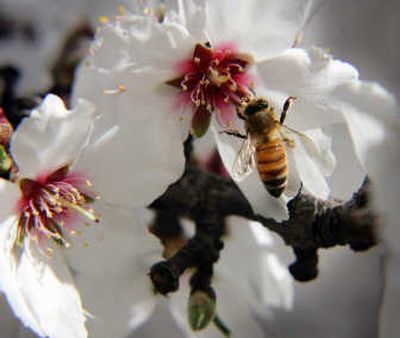Heat brings out worst in berries

I have a good crop of raspberries but some of the clusters have white spots on them. What is this and is it bad for the berries and the plant?
Judy McDonald, Spokane
Take heart, Judy, it’s a condition called white druplet disorder and is caused by high temperatures and exposure to intense solar radiation. We have had an unusual run of very hot weather earlier than usual this year, and it has caused the berries, or druplets, to not turn color. I have it in my patch not far from you, and it appears as white spots on the part of the berry most exposed to the sun. The hot weather came just as the berries were turning from the green stage to the white and pink stage. This is the time they are really susceptible to the damage. Other than the white color the berries are fine.
Another problem we are seeing with raspberries is that they are drying on the vine very quickly. Again, the heat and low humidity are just pulling the moisture out of the berry faster than the plant can supply it with water. Make sure your plants are well watered whenever we get hot weather. Shading plants with a loosely tied cotton sheet or thin row of cover fabric may help slow moisture loss down a bit.
A worker for the bees
Our unusually hot weather brings another problem. We may see low fruit set on tomatoes, peppers, cucumbers, melons and squash. Normally all these vegetables need the nighttime temperatures to be above 55 degrees to set fruit. We’ve had more than enough of those so far this year.
However, when the daytime temperature gets above 95, the pollination rates drop off markedly. The plants will drop their flowers instead of forming fruit. One reason for this is that bees that do most of the pollinating don’t like the heat any better than we do and are less active.
We can help out by hand-pollinating the flowers. With tomatoes and peppers take a small paint brush and brush the flowers to collect the pollen and move it to different flowers. With squash, cucumbers and melons remove the male flowers and gently pull off their petals leaving the pollen-laden anthers. Gently rub the anthers onto the stamens of the female flower. A female flower will have a swollen base just below the flower bud while the male flower will have a straight stem.
Watering or the lack of water can also affect pollination and the formation and ripening of the fruit. When the plants are dry, they drop flowers as a protective mechanism to conserve resources for the plant. After fruit has set, lack of water can cause misshapen and small fruits. Water consistently and deeply. After you water what you think is enough; dig into the soil and see how far down the soil is damp. Mulching plants with two to three inches of grass clippings, straw or pine needles will help reduce water loss from the soil.